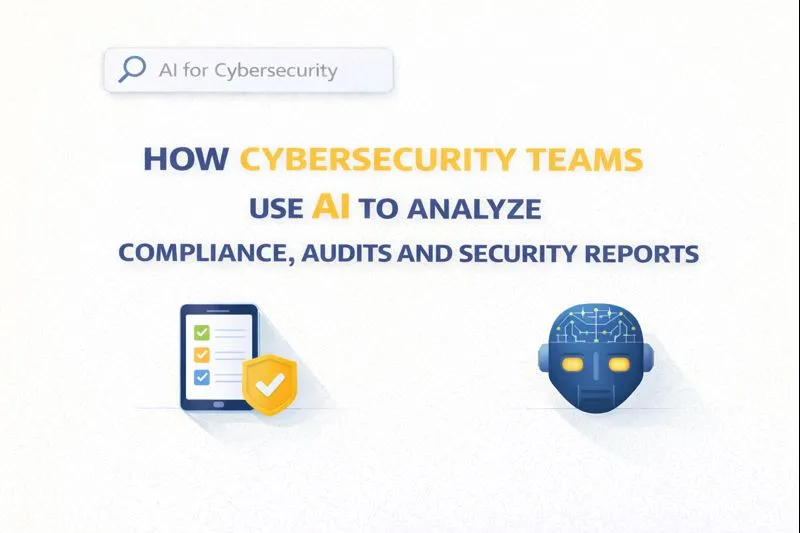Team Assessment Tools: 5 Reliable Platforms That Actually Improve Collaboration

Team assessment tools turn teamwork from feel-good fluff into hard results. In Deloitte’s 2025 survey, 73 percent of employees who collaborate report better performance, and 60 percent say brainstorming sparks fresh ideas. Gartner warns that skipping these tools creates “collaboration drag”—inefficiencies that leave 84 percent of marketers frustrated and make teams 37 percent less likely to hit revenue goals.
Below, you’ll meet five data-driven platforms that tackle the usual culprits—slow replies, blurred roles, shaky trust—so your next project runs smoother and your people feel sharper.
What team assessment tools are & why collaboration hinges on them
Team assessment tools are live software dashboards that track how a group communicates, clarifies roles, and gauges psychological safety in real time, not once a year. Picture a heads-up display that spots friction the moment it appears.
These platforms pull data from two main sources:
- Quick pulses or questionnaires that capture sentiment, trust, and goal clarity.
- Behavioral signals gathered from Slack or Microsoft Teams such as response times, message tone, and conversation drop-offs.
Why bother? Ineffective communication costs the average knowledge worker 35 working days per year, according to Axios HQ’s 2025 internal-communications study. In hybrid teams, where face-to-face cues are scarce, a spike in unanswered messages can snowball into missed deadlines.
Psychological safety matters even more. Google’s Project Aristotle ranked it the number-one predictor of team effectiveness after reviewing hundreds of teams. When a tool flags a dip in the “I feel safe speaking up” score, managers can step in before innovation stalls.
Most importantly, these tools create a feedback loop: test a fix (for instance, a shared agenda), watch the metrics, and iterate. Over a few weeks, those micro-adjustments translate into faster decisions, cleaner hand-offs, and workdays that feel organized instead of chaotic.
In short, team assessment software turns collaboration from guesswork into a measurable, continuously improving process.
Top team assessment tools that help improve collaboration:
Before you pick a platform, decide what problem you’re solving: clarity of roles, speed of decisions, or team trust. Then choose a tool that fits your workflow, respects your privacy posture, and gives you metrics you’ll actually review weekly. With that lens, here are five reliable options that consistently move the needle.
TeamDynamics:
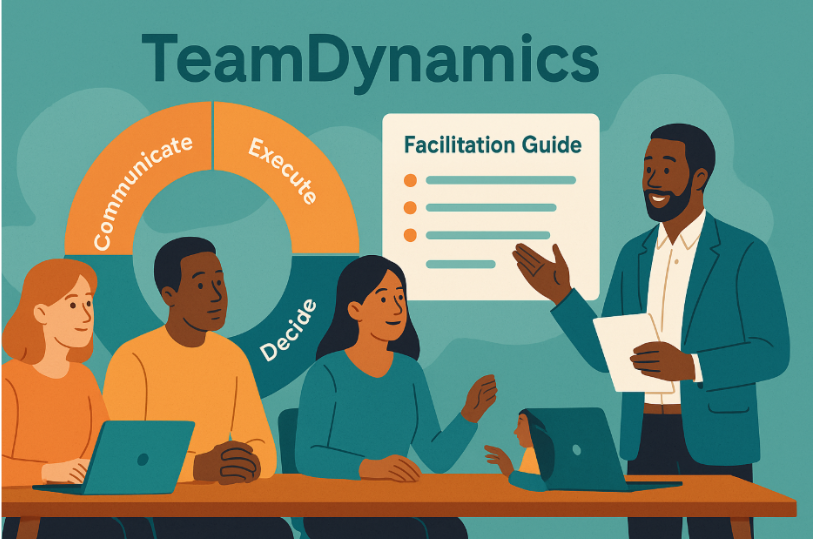
TeamDynamics is a team personality assessment that helps squads work better together.
First, a 10 - 15 minute survey maps each person’s working style across how they communicate, decide, and execute.
Then the platform turns results into a shared TeamDynamics report and a practical facilitation guide, giving you common language, strengths, and watch-outs to run an effective 45–90 minute discussion.
Instead of in-thread nudges, you get clear recommendations and exercises your team can adopt immediately - rituals for stand-ups, norms for async decisions, and agreements for roles and ownership.
Teams use TeamDynamics to kick off projects, onboard new members, or reset ways of working after growth or change.Transparent, one-time pricing is available for individuals, teams, and enterprises, and you can preview the experience with a sample report and a quick, free team health score.
If you’re ready for an evidence-based way to make collaboration smoother, TeamDynamics delivers a fast assessment and a structured conversation that turns insight into action.
Culture Amp:
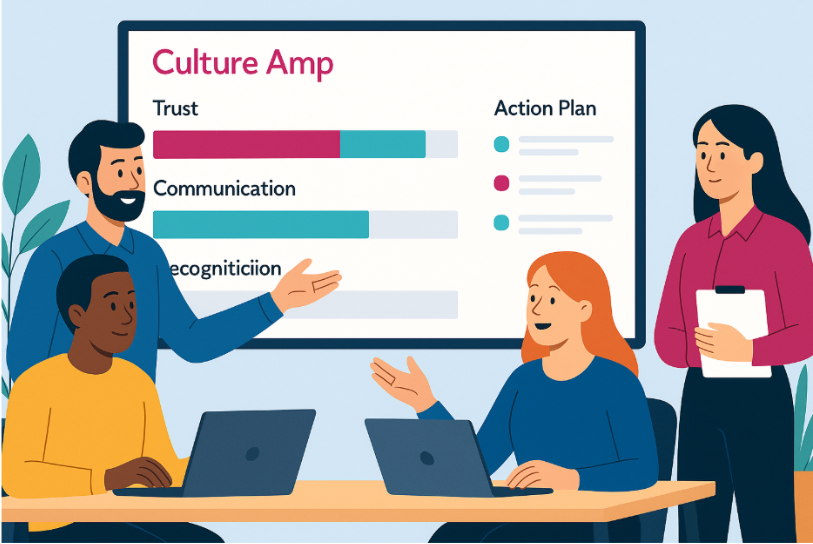
Culture Amp is a company-wide listening platform that turns short, anonymous pulses into clear culture actions.
The software offers science-validated question sets built by industrial-organizational psychologists. In a single pulse you can measure trust, cross-team communication, recognition, and more. Dashboards break results down by team, tenure, or location so patterns appear instantly.
Leaders rely on the benchmark view, which shows exactly how your score on “communication between departments” compares with similar organizations. From there you can click a recommended action, assign an owner, and track progress in one place.
The payoff is measurable. A Forrester Total Economic Impact study found that customers raised employee engagement by up to 20 percent and achieved a 311 percent ROI over three years. The Wikimedia Foundation, for instance, lifted its engagement score 15 points in 18 months after adopting the platform.
Because pulses can run quarterly or even monthly, you are never flying blind. A merger sparks anxiety? Launch a questionnaire next week. New policy lands flat? Spot the dip before rumors spread.
Whether you have 50 or 5,000 employees, Culture Amp keeps the feedback loop moving, turning quiet voices into clear, data-driven marching orders that reach managers by tomorrow morning.
CliftonStrengths:
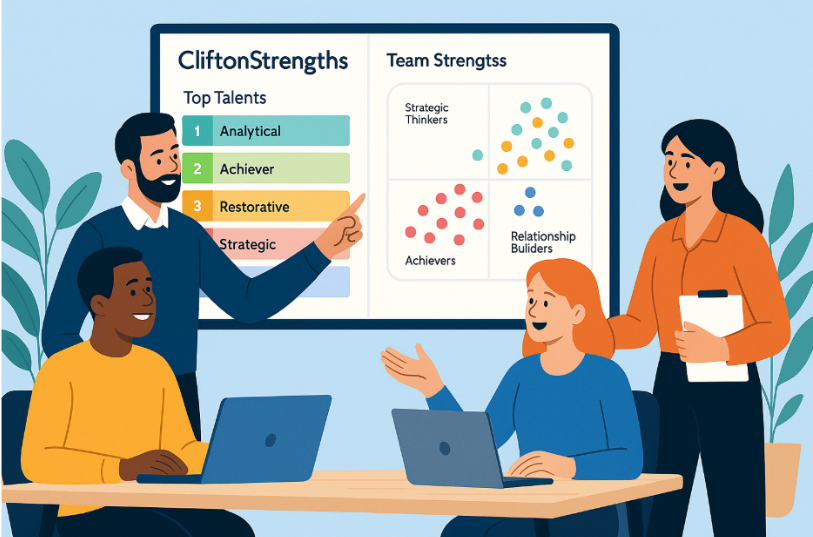
CliftonStrengths is an online assessment that reveals each teammate’s top talents and how those strengths combine at the team level.
Some collaboration stalls because tasks land with the wrong person. After every member completes the assessment, they receive a ranked list of 34 talent themes. Merge the results and you get a visual team map, perhaps rich in Strategic thinkers yet thin on Relationship Builders. Resourcing choices feel clear instead of political.
Strength-based teaming delivers results. Gallup’s meta-analysis of 49,000 business units found that teams focusing on strengths each day enjoy 8 percent higher engagement and 12.5 percent greater productivity. Another study shows they are six times more likely to be engaged when they use their strengths daily.
CliftonStrengths suits new squads under deadline or any group sensing untapped potential. It does not diagnose dysfunction; it amplifies what already works. Pair it with a pulse tool to spot blind spots, and you cover both sides of the collaboration coin.
DiSC Profile:
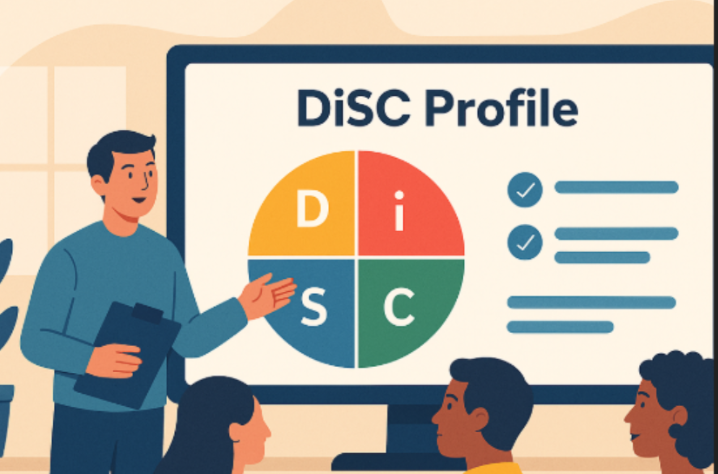
DiSC Profile is a personality framework that links workplace behavior to four core styles.
Ever leave a meeting where half the room looks energized and the other half feels steam-rolled? DiSC explains that split in four letters.
- Dominance (D) — prefers quick decisions.
- Influence (I) — loves brainstorming.
- Steadiness (S) — values harmony and stability.
- Conscientiousness (C) — needs data before approving a plan.
A 15-minute assessment places each teammate on this map, often with a secondary blend. When profiles are visible, teams set simple ground rules: people high in D outline goals at the start, while those high in C flag missing data early. Wiley, publisher of Everything DiSC, reports a 97 percent global satisfaction rate among 10 million learners across 150,000 organizations.
Why does that matter for collaboration? Because a shared language removes blame. Instead of “Jordan never listens,” the team says, “Jordan’s I style loves ideation, so let’s recap next steps for our S teammates before we wrap.”
Reach for DiSC when personality clashes with slow projects or when a cross-functional squad forms under pressure. If you’d like to see how DiSC stacks up against other leading assessments on cost, setup time, and scientific backing, this comprehensive roundup of team assessment tools puts the metrics side by side. The tool is quick, affordable, and, most important, turns style differences into a playbook everyone can use
TINYpulse:
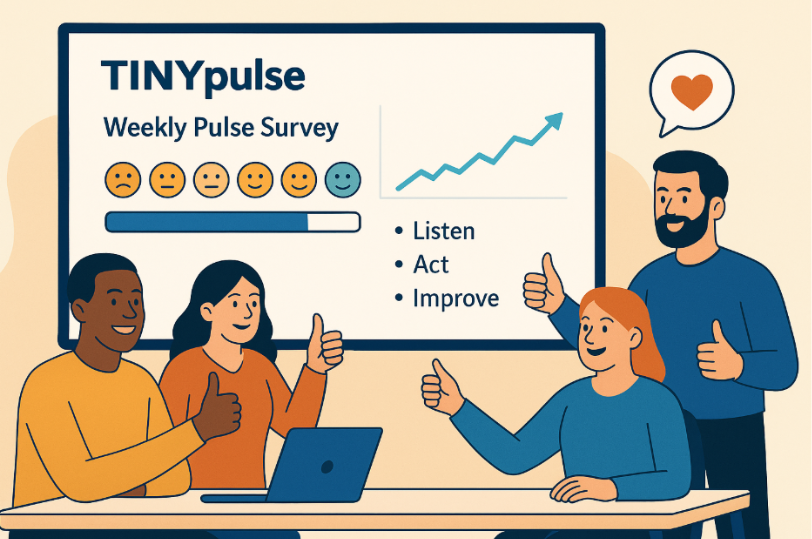
TINYpulse is a weekly one-question pulse tool that spots morale shifts before they become problems.
Big annual surveys reveal trends, yet small issues bloom between data points. TINYpulse closes that gap with a single anonymous question each week.
Cadence is the secret sauce. Spend one minute on Monday, and your colleagues have spoken, rating collaboration, flagging blockers, or suggesting fixes. Managers see patterns in a live dashboard; if scores dip around “meeting overload,” the agenda can shift by Wednesday instead of next quarter.
Positivity fuels the loop. A built-in Cheers for Peers feed lets people recognize great work instantly. In TINYpulse’s customer data, organizations that reply to comments within seven days cut voluntary turnover by 10 percentage points, as Galloway & Co. did when it dropped from the low twenties to the low teens in a single year. Simply adding the Slack or Teams integration lifts response rates 29 percent on average as Galloway & Co. did when it dropped from the low twenties to the low teens in a single year.
TINYpulse excels in fast-moving startups, remote groups, or any culture that can change overnight. It will not map complex personalities, yet it keeps a real-time finger on mood and nudges leaders to act before frustration festers.
Conclusion
Collaboration improves when you make it observable, discussable, and adjustable. The tools above do exactly that—turning vague frictions into visible signals and concrete actions you can test within weeks, not quarters. Pick one platform to pilot, set a simple baseline (decision time, unresolved threads, or engagement pulse), and commit to a 6–8 week cycle with a named owner. Share norms up front (what’s measured, what isn’t), keep feedback loops tight (weekly check-ins, two experiments per sprint), and retire any metric you don’t use. Close the pilot with a brief retro: what sped up, what still drags, and what practice becomes a permanent team norm. Do that, and your “collaboration strategy” stops being a poster on the wall and starts showing up in faster decisions, cleaner hand-offs, and calmer workdays.


